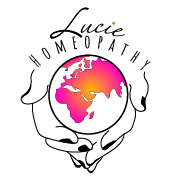THE LAWS THAT SUPPORT THE HOMEOPATHIC PHILOSOPHY, part 1.
LAW OF SIMILARS
Homoeopathy => homeo=similar, pathos=sufferring
Homoeopathy = similar suffering
Homeopathy is a system of medicine that was developed by a German doctor Samuel Hahnemann back in the 1800’s. He wanted to come up with a way to heal people that was gentle and that which created a permanent cure, rather than the medical practices of his time (bloodletting, application of leeches or using toxic amounts of mercury to treat venereal disease), which only caused more suffering.
But, the philosophy of healing, according to the Law of Similars (which is part of the founding/fundamental basis of homeopathy), has been around much longer. In fact, it is as ancient as Hippocrates, who taught that all diseases are caused by inherent predisposition and susceptibility to causation. He also stated that cure can be achieved in one of two ways: through the action of opposites or through the action of similars.
Law of Similars, in other words ‘like cures like’ (similia similibus curantur), which means: a substance that has in its capability to cause a certain illness/symptoms in a healthy person will also be able to cure similar symptoms in a sick person. In other words: what can make you ill, can also make you well again.
The dose of the substance here will be crucial – as Paracelsus quotes:
‘the dose makes the poison.’
It is the magic of the minimal dose in homeopathy to which we adhere to – only take the remedy when it is called for, once you are better you stop (unlike in conventional medicine where you generally have to finish the ‘course’ of meds, which often are very high doses too).
Practical examples of Law of Similars:
When you are cutting up an onion, most people will produce symptoms that are very similar to those of a head cold – red, runny eyes and nose, but those symptoms can also be similar to those of an allergic reaction (to pollen for example) – both of these may be helped by a remedy made from an onion, Allium Cepa.
Another example which probably most of us have experienced is being stung by a stinging nettle (the stinging sensation is caused by formic acid and amines), which produces burning and itching sensations. The remedy made from this plant – Urtica Urens, has (among many other properties) the ability to alleviate stinging/burning pains as well as urticaria=hives as these are the similar symptoms observed after being stung by a nettle.
Coffea Cruda = coffee, a substance we all know very well and drink it regularly for the reason of being tired or wanting to elevate our mood, mental activity and energy, which can help that but it can also prevent us from sleep (from having too much) and make us hyper with mental over activity. Children can be in a situation like this, for example before a birthday party or Christmas – excited and unable to sleep – similar symptoms to those that coffee can produce, and therefore the remedy made from coffee can help to ameliorate those symptoms.
Nowadays we have thousands of remedies at our disposal, so it is all up to the individual’s unique symptoms that they are experiencing. And as a homeopath, I am always on the ‘look out’ for those ‘strange, rare and peculiar’ symptoms, which will distinguish one person from the next. Some people might just develop ‘similar’ symptoms, but often there will be that one symptom that will make their experience of the illness unique.
This philosophy applies in both prescribing – acute and chronic.
If you have tried to find a suitable remedy for your ailment, but had no success thus far, you are welcome to book in for an appointment or free 15 mins chat with me!
luciehomeopathy@gmail.com

